Saturday Night Fever (1977) (R) ★★★
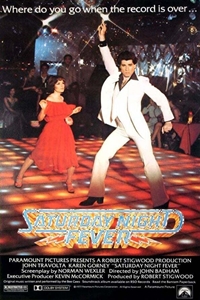 (Spoilers, but hey, it's 40 years old!)
(Spoilers, but hey, it's 40 years old!)
Many movies look much different when watched years after their release but few have aged in quite the way that Saturday Night Fever has. When the movie first debuted in the winter of 1977, it rode the rising tide of disco to the top of the box office then fed back into the phenomenon. There's a reason Saturday Night Fever is regarded as emblematic of disco - because, while it didn't invent the short-lived dance craze, it captured it in a way no other film (narrative or documentary) has done and, by doing so, enhanced its popularity.
It would be disingenuous to write that Saturday Night Fever is only about disco although, 40 years after its initial release, the nostalgia-steeped dance scenes are the most effective. At the heart of the film is an age-old tale about the aimlessness of an unfocused life. John Travolta's character, Tony Manero, is a '70s rebel without a cause. He's an embodiment of Bruce Springsteen's "Glory Days" except for him, his era is post-high school. He's the king of the dance floor but his days are numbered and, when it's not Saturday Night, the best he can do is work as a grunt in a paint store.
If not for its perfect encapsulation of a slice of life during the disco era, Saturday Night Fever might not be as strangely compelling as it is. The acting is at best so-so. The story, while it hits a nerve that many will relate to, is generic. The camerawork is interesting but not groundbreaking (although this was one of the first films to use the Steadicam). It all comes down to the music, the dancing, and the film's ability to capture an era that flared brightly then faded quickly. If you didn't live through the late '70s, Saturday Night Fever may be the closest you'll get to an unvarnished depiction of them.
At the time he made Saturday Night Fever, director John Badham was a TV veteran but a big-screen neophyte. The success of this film allowed him to move on to other high profile projects - he would make Dracula (the Frank Langella/Laurence Olivier one), War Games, Short Circuit, and Stakeout in the next decade before cooling off and returning to television. As envisioned, Saturday Night Fever was never expected to be a breakout hit. It was perceived more as what would be a called an "indie" in later years - a low-budget, no frills look at the life of a disaffected young man whose existence is at a dead-end by the time he hits 21. The movie's great fortune - its ability to surf a cultural wave - was more a factor of perfect timing than great filmmaking. The subsequent failed attempts to build on Saturday Night Fever's initial popularity (a reworked PG-rated version and a horrific sequel, Staying Alive) show how crucial the late 1977 release date was to the production's incorporation into the pop culture lexicon. The anti-disco movement (that culminated on the July 12, 1979 Disco Demolition Night) was already building as early as a year after Saturday Night Live's release.
Outside of the music, the movie's draw was its leading actor, John Travolta. At the time, Travolta was immensely popular as Vinnie Barbarino, the twenty-something high school student in "Welcome Back, Kotter." Saturday Night Fever only added to his fame, at least short-term. Like disco, however, Travolta's early career was a flash-in-the-pan. Following hits with Saturday Night Fever, Grease, and Urban Cowboy, he faded into obscurity until Quentin Tarantino rediscovered him. Under Badham's direction, his acting is adequate but his physicality and dancing ability are amazing. Watching him bend, strut, and gyrate to the music of the Bee Gees is an almost surreal experience. As cheesy as all the moves may seem to our jaded eyes, it's apparent that Travolta does them perfectly, without a hint of condescension or awkwardness, and it's easy to understand why anyone in the disco culture might have become enraptured by this. Travolta's performance reflects the character he plays: he lights up when he's on the dance floor and fades when away from it.
To fill out the cast, the filmmakers went to the ranks of TV bit players and the results are about what one might expect from such a scavenger hunt. No one is particularly good or memorable and a few are actually pretty bad. Tony's love interest and attempted rape victim, Stephanie, is played by then 32-year old Karen Lynn Gorney, didn't make another movie until nearly 20 years after this one. Other members of the ensemble, like Donna Pescow (as Annette, the needy girl obsessed with Tony) and Barry Miller (as Bobby C., the boy who loses his footing on the bridge) had healthy TV careers but nothing memorable. Whatever Saturday Night Fever's strengths, acting wasn't among them.
Perhaps Saturday Night Fever's biggest star was the soundtrack. The charting songs, all of which were composed by the Brothers Gibb, infected the radio airwaves from late 1977 through much of 1978. The soundtrack was ubiquitous. Three Bee Gee's singles ("How Deep Is Your Love", "Night Fever", and "Staying Alive") reached #1 on the Top 100 as did Yvonne Elliman's "If I Can't Have You" (which the Bee Gee's wrote). Tavares' "More Than a Woman" (another Bee Gee's composition) reached #32. The movie also included a number of big, previously-released disco mainstays: the Bee Gee's own "Jive Talkin'" and "You Should Be Dancing", Walter Murphy's "A Fifth of Beethoven", and the Trammps "Disco Inferno".
The story follows the exploits of Tony Manero (Travolta), a 19-year old Italian American living in Brooklyn. He bunks with his family and spends his 40-hour work week toiling away in a paint store. The one thing he looks forward to every week is Saturday night, when he and his friends saunter to the local disco club, 2001 Odyssey, where his is king of the dance floor. When the disco announces a dance contest, Tony initially agrees to partner with Annette, who is desperate for a relationship with him, but he eventually ditches her for the "classier", older, and more adept Stephanie. As Tony and Stephanie practice, they form a tentative friendship. Tony wants to take this farther but Stephanie doesn't. They win first prize but Tony doesn't feel they deserve they trophy. Disillusioned, he tries to rape Stephanie but she escapes. He then joins his friends doing risky stunts on the Varazzano-Narrows Bridge. During these activities, one of Tony's friends, Bobby C., loses his balance and his life. The movie concludes with Tony taking steps to get things together and re-connect with Stephanie as a friend.
A few of the subplots in Saturday Night Fever are more interesting than the main story. Tony's brother, Father Frank (Martin Shakar), suffers a crisis of faith and decides to leave the priesthood. While this tale has been told many times, the fascinating aspect here is how the family reacts. In a close-knit 1970s Italian-American community like Bay Ridge, having a priest in th
To get the full Quicklook Films experience, uncheck "Enable on this Site" from Adblock Plus
box office top 10

Civil War Released: April 12, 2024 Cast: Kirsten Dunst, Wagner Moura 11.1M
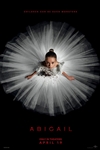
Abigail Released: April 19, 2024 Cast: Melissa Barrera, Dan Stevens 10.2M

Godzilla x Kong: The New Empire Released: March 29, 2024 Cast: Rebecca Hall, Brian Tyree Henry 9.5M
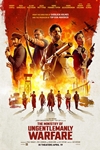
The Ministry of Ungentlemanly Warfare Released: April 19, 2024 Cast: Henry Cavill, Eiza Gonzalez 9M

Spy x Family Code: White Released: April 19, 2024 Cast: Takuya Eguchi, Saori Hayami 4.9M

Kung Fu Panda 4 Released: March 8, 2024 Cast: Jack Black, Viola Davis 4.6M

Ghostbusters: Frozen Empire Released: March 22, 2024 Cast: Paul Rudd, Carrie Coon 4.4M

Dune: Part Two Released: March 1, 2024 Cast: Timothée Chalamet, Rebecca Ferguson 2.9M
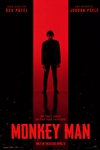
Monkey Man Released: April 5, 2024 Cast: Dev Patel, Sikandar Kher 2.2M
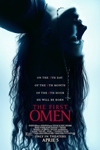
The First Omen Released: April 5, 2024 Cast: Nell Tiger Free, Bill Nighy 1.7M






